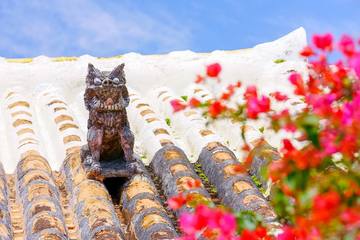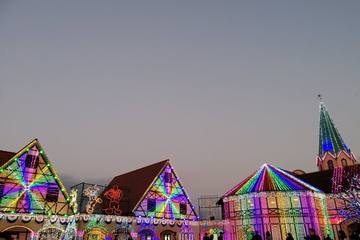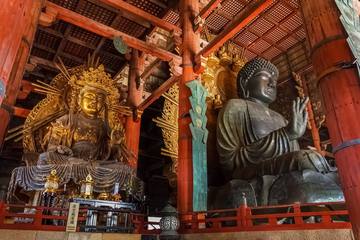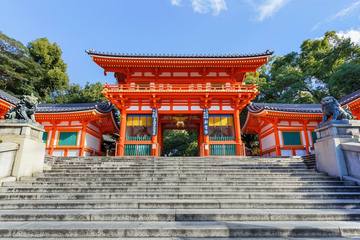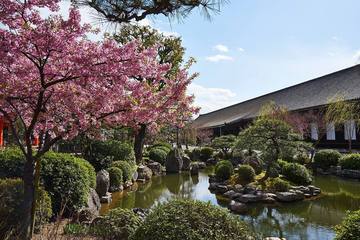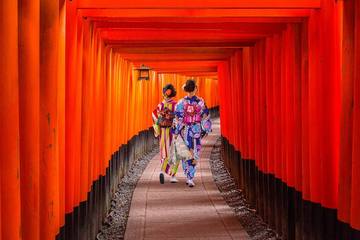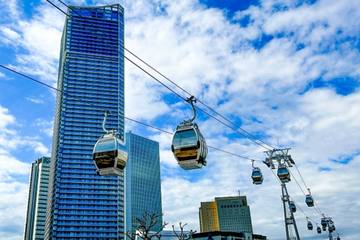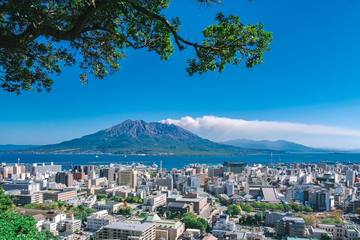
"Ginkaku-ji" World Heritage Site: Delve into its Lesser-Known Charms and Master the Art of Enjoyment
Ginkaku-ji Temple, also known as the Silver Pavilion, is a must-visit temple during your Kyoto trip, just like its counterpart, Kinkaku-ji (Golden Pavilion), which is also a UNESCO World Heritage site. While Kinkaku-ji captivates with its opulent grandeur, Ginkaku-ji exudes a serene "wabi-sabi" spirit, drawing visitors with its profound and ethereal beauty. As the epitome of the Higashiyama culture, characterized by the austere world of samurais and Zen Buddhism, Ginkaku-ji stands in contrast to the lavish aristocratic culture of the Kinkaku-ji created by Ashikaga Yoshimitsu. In this article, we will explore the history and captivating allure of Ginkaku-ji, a manifestation of Ashikaga Yoshimasa's aesthetics and religious beliefs, who assumed the position of shogun at the tender age of 15.
*Updated on September 21, 2022, from a previously published article.
*This article is translated using ChatGPT.
For the latest information on each tourist spot and facility, we recommend checking the official website.
- 日本 、京都府
INDEX
Ginkaku-ji Temple: Basic Information
Highlights of Ginkaku-ji Temple
Tourist Spots around Ginkaku-ji Temple
Recommended Local Cuisine around Ginkaku-ji Temple
Recommended Souvenirs around Ginkaku-ji Temple
Boga-Tei Philosopher's Path Store
Capture the Beauty of Kyoto's Iconic Architecture with Your Own Eyes
Ginkaku-ji Temple: Basic Information
History
Ginkaku-ji Temple, formally known as Higashiyama Jishō-ji, is one of the sub-temples belonging to the Rinzai sect of Zen Buddhism, just like its counterpart, Kinkaku-ji Temple. While the reason behind the name "Kinkaku-ji" is well-known, many people wonder why Ginkaku-ji is called the "Silver Pavilion" when it is neither silver in color nor adorned with silver leaf. The nickname "Ginkaku-ji" actually originated during the Edo period as a counterpart to the famous "Kinkaku-ji" with its golden pavilion, creating a parallelism between the two.
Situated at the base of Mt. Higashiyama, famous for its grand bonfire event known as Daimonji, Ginkaku-ji Temple has long been blessed with a picturesque setting and a serene atmosphere. Previously, a temple called Jōdo-ji stood on this site but was destroyed during the Ōnin War. It was then chosen by Ashikaga Yoshimasa, the 8th shogun of the Muromachi Shogunate, who dedicated his life to the pursuit of beauty, as the location for his mountain villa. Construction of the villa began in 1482 (Bunmei 14), and after Ashikaga Yoshimasa's passing in 1490 (Entoku 2), his will dictated that the mountain villa be converted into a Zen temple. Thus, Jishō-ji, named after his posthumous name "Jishōin," was established.
In 1994 (Heisei 6), Ginkaku-ji Temple was recognized for its historical significance and inscribed as a UNESCO World Heritage site as part of the "Historic Monuments of Ancient Kyoto."
Visiting Hours
The visiting hours for Ginkaku-ji Temple are from 8:30 to 17:00 during the summer season from March 1st to November 30th, and from 9:00 to 16:30 during the winter season from December 1st to the end of February. Please note that the hours may vary depending on the season, and there may be changes during special admission periods, so it is recommended to confirm in advance before your visit.
The estimated time for a visit is approximately 30 minutes.
Admission Fee
The admission fee for Ginkaku-ji Temple is 500 yen for adults (high school students and above) and 300 yen for elementary and middle school students.
Access
Address: 2 Ginkakuji-cho, Sakyo-ku, Kyoto City, Kyoto Prefecture
Bus
The nearest bus stop, "Ginkaku-ji-michi," is serviced by routes 5, 17, 32, 100, 102, 203, and 204. It is very convenient as you can reach Ginkaku-ji without any transfers from areas such as Kyoto Station, Gion, and Shijo Kawaramachi. It is an approximately 8-minute walk from the bus stop "Ginkaku-ji-michi" to Ginkaku-ji Temple.
Train
If you are accessing from Kyoto Station, combining train and bus transportation can be convenient.
Train
When accessing from Kyoto Station, utilizing both the train and bus is also convenient. Take the subway Karasuma Line from Kyoto Station and get off at "Imadegawa Station." Transfer to either the 102 or 203 bus at the "Karasuma-Imadegawa" bus stop. After approximately 15 minutes on the bus, you will arrive at the "Ginkaku-ji-michi" bus stop.
Car
While there is no parking available within the grounds of Ginkaku-ji Temple, there is a municipal parking lot called "Kyoto City Ginkaku-ji Kanko Chushajo" nearby. The parking lot can accommodate up to 40 regular-sized cars and operates from 8:40 to 17:10. The usage fee is 1,040 yen per car per entry.
Please note that this parking lot prioritizes buses and taxis, so it may not be available during peak periods. It is recommended to use public transportation as much as possible.
Highlights of Ginkaku-ji Temple

Kannon Hall
Kannon Hall, also known as Ginkaku, is an iconic building of Jishō-ji Temple and has been designated as a National Treasure . Built during the Muromachi period, it was inspired by Shari-den (Golden Pavilion) of Rokuon-ji Temple and Rurikō-den of Saikyō-ji Temple. The first floor, called Shinkū-den, features an architectural style strongly influenced by Shoin-zukuri, and houses a collection of one thousand small Jizo statues. The second floor, known as Chōon-kaku, resembles a Zen-style Buddhist hall and enshrines a wooden statue of Kannon Bodhisattva. The similarity in structure between the upper and lower levels with the Shari-den of Kinkaku-ji Temple is what led to the name "Ginkaku-ji Temple." Please note that the interior is not open to the public .
Tōgudō
Tōgudō, a small building measuring three and a half ken (approx. 6.4 meters) per side, was originally built as a Butsuden (Buddhist hall) during the late Muromachi period. It is said to have enshrined an Amida Buddha statue at that time. As one of the few remaining structures from the time of the construction of the Higashiyama mountain villa, Tōgudō is surrounded by a Zen-style garden beloved by Yoshimasa, the shogun of the Muromachi Shogunate. Among its four rooms, the four and a half tatami mat room known as Dōjin-sai served as a study and tea room. It features the oldest existing tsuke-shoin (a built-in desk-like shelf) and chigaidana (a staggered shelf), which are said to be the roots of the current Japanese-style rooms.
Shirasu Sand Garden
In front of the Hōjō (Abbot's Quarters), where the main Buddha image of Shakyamuni Buddha is enshrined, lies a beautiful dry landscape garden with white sand, designated as a Special Place of Scenic Beauty and a Special Historic Site . The garden was created based on the pond and strolling garden structure of Shōhō-ji Temple, known as the "Koke-dera" (Moss Temple), but unfortunately, most of the original garden from the time of construction has been lost. The current garden is believed to have been modified during the Edo period. The raised white sand in a mound shape is called "Ginsadan" and is designed to reflect the moonlight. The cone-shaped mound of white sand called "Kōgetsudai" was created for sitting on and waiting for the moon to rise.
Path of Philosophy
The Path of Philosophy is approximately a 2-kilometer walk along the Lake Biwa Canal, connecting Ginkaku-ji Temple and Nanzen-ji Temple. This area is close to Kyoto University and has been known as the "Path of Scholars" or the "Path of Philosophers" because many intellectuals have lived here since ancient times. It was named the "Path of Philosophy" in honor of Nishida Kitaro, a philosopher and professor at Kyoto University in the early 20th century, who used to walk this path every morning, contemplating his thoughts. The cherry blossoms and autumn foliage along the canal make it one of Kyoto's most beautiful spots, attracting numerous visitors. In 1987, it was selected as one of the "100 Roads of Japan."
Tourist Spots around Ginkaku-ji Temple
Heian Shrine
The vibrant vermilion-colored shrine buildings and the grand torii gate of Heian Shrine, located in the same Higashiyama area as Ginkaku-ji Temple, make it a perfect spot to visit together. It is just a short bus ride on the #5 bus from the "Ginkaku-ji Michi" bus stop, and you'll arrive at the nearby "Okazaki Kōen Bijutsukan, Heian-jingu Mae" bus stop in about 10 minutes. Be sure to include Heian Shrine in your itinerary.
Address: 97 Okazaki Nishitennocho, Sakyo-ku, Kyoto
Kinkaku-ji Temple
Kinkaku-ji Temple, another temple belonging to the Rinzai sect of Zen Buddhism, is a must-visit place alongside Ginkaku-ji Temple. You can easily access it by taking either bus #102 or #204 from the "Ginkaku-ji Michi" bus stop without any transfers. The nearest bus stop, "Kinkaku-ji Michi," is about a 45-minute bus ride away.
Address: 1 Kinkakuji-cho, Kita-ku, Kyoto
Ryoan-ji Temple
Ryoan-ji Temple, famous for its dry rock garden, is a renowned Japanese garden that you should visit along with Ginkaku-ji Temple's Shirasu Sand Garden. Registered as a UNESCO World Heritage site, Ryoan-ji Temple can be reached by taking bus #204 from the "Ginkaku-ji Michi" bus stop and getting off at the "Waratenjin-mae" bus stop. It's about a 16-minute walk from the bus stop.
Address: 13 Ryoanji Goryonoshitacho, Ukyo-ku, Kyoto
Kyoto Circuit Trail
The Kyoto Circuit Trail is a mountain hiking trail that starts from Fushimi Inari Taisha and loops around various areas including Kiyomizu-dera Temple, Ginkaku-ji Temple, Kurama, and the Togetsukyo Bridge in Arashiyama. Along the trail, you'll encounter numerous World Heritage sites and cultural treasures, allowing you to enjoy Kyoto's abundant nature and history all at once.
If you're not up for completing the entire circuit, don't worry! The trail is conveniently divided into sections, starting from train stations and bus stops. Plus, there is a section of the route that passes near Ginkaku-ji Temple (from Nanzen-ji Temple to Ginkaku-ji Temple), making it easy and casual to enjoy.
Recommended Local Cuisine around Ginkaku-ji Temple
Meidai Omen Ginkaku-ji Honten
Located just a 5-minute walk from Ginkaku-ji Temple, Meidai Omen is a long-standing udon noodle restaurant beloved by locals. They pride themselves on using only domestic wheat flour to create their smooth and chewy udon noodles, which are served with generous toppings and a flavorful broth. They also offer a variety of side dishes, including vegetable tempura and nostalgic miso dengaku. It's the perfect spot for both lunch and dinner.
Address: Ginkaku-ji Bus Pool, South of Ginkaku-ji, Sakyo-ku, Kyoto
Ginfuku
Ginfuku is a restaurant specializing in Kyoto cuisine and traditional bento. Located along the Philosopher's Path, you can enjoy authentic Kyoto flavors at reasonable prices. Their sesame tofu is a proud specialty made with a focus on ingredients and craftsmanship since its establishment.
Address: 65 Jodoji Ishibashicho, Sakyo-ku, Kyoto
Hakujin Kinto Gin
Hakujin Kinto Gin is a specialty store for gold and silver leaf located on the approach to Ginkaku-ji Temple. Their Gold Kinpaku Soft Serve and Silver Ginpaku Soft Serve, generously topped with edible gold and silver leaf, are visually stunning. They also offer other exciting menu items such as Ginkaku Zenzai with a floating silver leaf and Gold Dust Coffee with scattered gold leaf. They also sell cosmetics and miscellaneous goods made with gold leaf, making it a perfect place to find souvenirs.
Address: 15-6 Ginkakuji-maecho, Sakyo-ku, Kyoto
GOSPEL
GOSPEL is a café-restaurant located on the second floor of an old-fashioned Western-style mansion. You can enjoy a stylish atmosphere while indulging in coffee or lunch. The building, with its castle-like pointed roof and ivy-covered brick walls, exudes a charming ambiance. The interior is furnished with custom-made antique furniture imported from England, creating an elegant setting for a leisurely time.
Address: 36 Jodoji Uenantacho, Sakyo-ku, Kyoto
Recommended Souvenirs around Ginkaku-ji Temple
Boga-Tei Philosopher's Path Store
Boga-Tei is a Kyoto-style souvenir shop that uses chirimen fabric to create uniquely Japanese and pop-designed goods. Their hats and aloha shirts made by repurposing antique kimonos are distinctive, and each piece is one of a kind. They are perfect for souvenirs or gifts.
Address: 86 Jodoji Minamidacho, Sakyo-ku, Kyoto
QU-AN Hanayouju
QU-AN Hanayouju is a Japanese miscellaneous goods shop that renovated a warehouse that is over 150 years old. They offer unique and stylish Kyoto-inspired items, including chirimen fabric goods, seasonal flower arrangements, and "Sugi no Ha Seiyou" essential oil extracted from Kyoto's Kitayama cedar.
Address: 39 Ginkakuji-machi, Sakyo-ku, Kyoto
Gelme
Gelme is a bakery with a dedicated owner who has experience as a patissier in Tokyo and France, as well as in Japanese cuisine. They offer carefully crafted bread that can be enjoyed with meals and even paired with wine in the evening. It's a must-visit bakery for lunch or dinner.
Address: 3 Jodoji Nishidacho, Sakyo-ku, Kyoto
Capture the Beauty of Kyoto's Iconic Architecture with Your Own Eyes
Immerse yourself in the timeless beauty and tranquil atmosphere of Ginkaku-ji Temple, an iconic Kyoto landmark that embodies the essence of Japanese art and spirituality. As you wander through its meticulously crafted gardens and pavilions, let the serene ambiance transport you to a realm of inner peace and contemplation. Ginkaku-ji's understated elegance and minimalist design showcase the harmonious relationship between nature and human creativity. Take a moment to reflect on the profound teachings of Zen philosophy that resonate within these sacred grounds. Depart from Ginkaku-ji with a renewed sense of serenity and a deeper appreciation for the beauty that exists in simplicity. Let this spiritual journey inspire you to seek balance and tranquility in your own life, embracing the art of living in the present moment.
*Thank you for reading the article!
To improve YOKKA's service, we kindly request your participation in a survey below.
YOKKA


